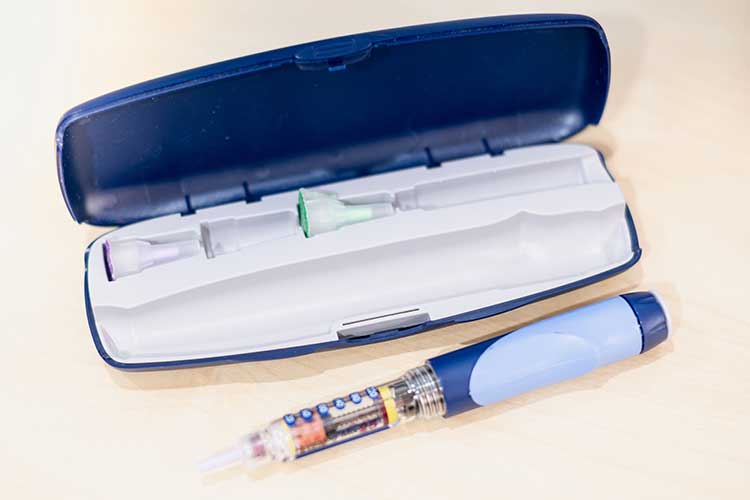Safe food handling is always important, but particularly so in healthcare settings, where you are catering to vulnerable or sick people who are highly susceptible to the consequences of foodborne illness or infection.
Each year, there are an estimated 4.1 million cases of food poisoning in Australia (Food Authority 2023).
These cases are largely preventable. It only takes a few simple steps to reduce the risk of food poisoning (AIFS 2018).
Preventative measures against food poisoning include observing basic personal hygiene techniques and careful food preparation, storage and display.
Food Handling Under the Strengthened Aged Care Quality Standards
Standard 6: Food and Nutrition - Outcome 6.3: Provision of food and drink (Action 6.3.3) under the strengthened Aged Care Quality Standards requires aged care organisations to ensure all meals, drinks and snacks provided are prepared and served safely (ACQSC 2024).
Food Handling Basics
Keep the following at the forefront of your mind when handling food:
- Clean
- Chill
- Cook
- Separate

Clean
Always wash (vigorously and for at least 20 seconds) and dry your hands:
- Before you begin preparing food
- After handling raw meat, fish, eggs or vegetables with soil
- After going to the bathroom
- After blowing your nose
- After touching an animal
- After touching sores or cuts
- After handling garbage
(Healthdirect 2022; FSANZ 2023)
For a comprehensive guide on how to properly perform hand hygiene, read Hand Hygiene 101.
If you’ve experienced infection, diarrhoea or vomiting, avoid handling food for at least 48 hours after your symptoms disappear (Healthdirect 2022).
Wipe down benches before and after use (SCHN 2024).
To avoid cross-contamination, keep utensils and cutting boards used for raw and ready-to-eat foods separate and wash them with warm, soapy water between uses (Healthdirect 2022).

Chill
As a general guideline, food that must be kept cold should be stored at or below 5°C to prevent the growth of bacteria that can lead to food poisoning. Frozen food should be kept at -18°C or colder. Use a thermometer to check these temperatures (Food Safety Information Council 2020).
- After shopping, store cold foods as quickly as possible in the fridge and keep them in the fridge until eaten. A cooler bag or ice-brick can help keep products cool in the car.
- Mark foods that are to be frozen with the date you freeze them. While food can be kept in the freezer for long periods of time, its colour and texture will change.
- Cool leftovers quickly.
(FSANZ 2023; Food Safety Information Council 2020; Healthdirect 2022)
Cook
Make sure meat is thoroughly cooked and that the centre of cooked food is at least 75°C.
- Serve hot food steaming at above 60ºC.
- Do not reheat food more than once.
- Cook poultry, minced meat and sausages all the way through until the juices run clear and ensure there is no pink left.
- Defrost raw meats thoroughly before cooking.
- Always follow cooking instructions on packaged foods.
(Healthdirect 2022; Food Safety Information Council 2022; FSANZ 2023)
Separate
Bear in mind that raw meat, fish, poultry and raw vegetables can contain large numbers of bacteria. For this reason, protective measures need to be taken to prevent bacteria from spreading.
- Keep raw food and ready-to-eat food separate to avoid cross-contamination.
- In order to avoid cross-contamination, keep utensils and cutting boards used for raw and ready-to-eat foods separate and wash them with warm, soapy water in between use.
- Wash your hands between handling raw food and ready-to-eat food.
- Food should be stored in covered containers in the fridge. Put raw meats and poultry at the bottom of the fridge so the juices don’t contaminate food on lower shelves.
- Don’t put cooked meat back on the same plate the raw meat was on.
(FSANZ 2023; Healthdirect 2022)

Food Safety Facts
- The temperature danger zone for food safety is between 5°C and 60°C. Outside of this zone, bacteria don’t grow easily.
- The best way to defrost frozen food is in the fridge or microwave. Leaving food on the bench to defrost leaves it vulnerable to bacteria growth, as the outer part of the food will thaw faster than the middle.
- Food doesn’t necessarily need to smell, look or taste bad to be contaminated. Bacteria are the catalyst of food poisoning and are not spotted easily.
- Rice is home to a particularly tough type of bacteria (Bacillus cereus) that is difficult to eliminate when cooking.
- Food poisoning can take one to three days to develop, so you shouldn’t assume your upset stomach is from the last thing you ate.
- Food poisoning can be more severe than an upset stomach. It can be much more serious, and in some cases, deadly.
(Healthy WA 2018)
Test Your Knowledge
Question 1 of 3
Which one of the following must be present for food to potentially cause food poisoning?
Topics
Further your knowledge
References
- Aged Care Quality and Safety Commission 2024, Standard 6: Food and Nutrition, Australian Government, viewed 20 June 2024, https://www.health.gov.au/resources/publications/strengthened-aged-care-quality-standards-august-2025?language=en/food-and-nutrition
- Australian Institute of Food Safety 2018, Food Safety Becoming a Serious Issue For South Australians, AIFS, viewed 21 June 2024, https://www.foodsafety.com.au/news/food-safety-south-australia
- Food Authority 2023, Food Poisoning, New South Wales Government, viewed 21 June 2024, https://www.foodauthority.nsw.gov.au/consumer/food-poisoning
- Food Safety Information Council 2020, Food Storage: Pantry, Fridge or Freezer, Food Safety Information Council, viewed 21 June 2024, https://www.foodsafety.asn.au/topic/food-storage-pantry-fridge-or-freezer/
- Food Standards Australia New Zealand 2023, Safe Food Australia - A Guide to the Food Safety Standards, FSANZ, viewed 21 June 2024, https://www.foodstandards.gov.au/publications/safefoodaustralia
- Healthdirect 2022, Food Safety, Australian Government, viewed 21 June 2024, https://www.healthdirect.gov.au/food-safety
- Healthy WA 2018, Food Safety Myths, Government of Western Australia, viewed 21 June 2024, https://www.healthywa.wa.gov.au/Articles/F_I/Food-safety-myths
- Sydney Children’s Hospital Network 2024, Food Safety, New South Wales Government, viewed 21 June 2024, https://www.schn.health.nsw.gov.au/kids-health-hub/kids-nutrition/family-food-safety
 New
New 

